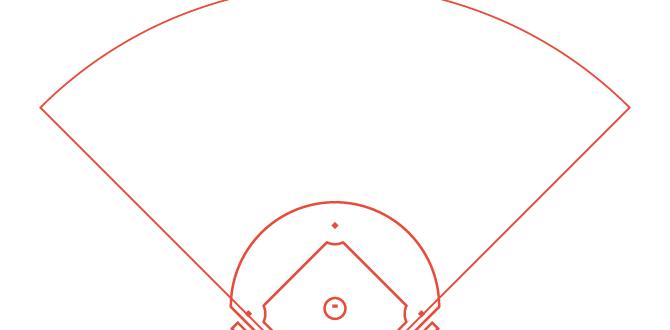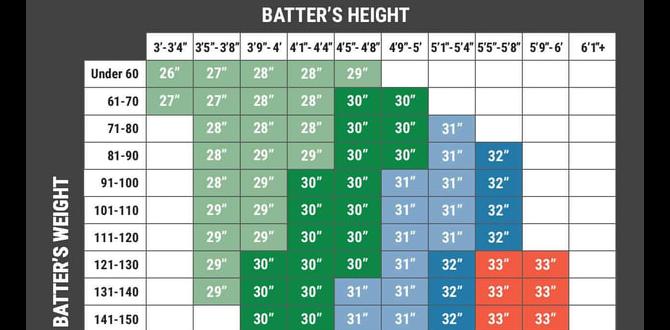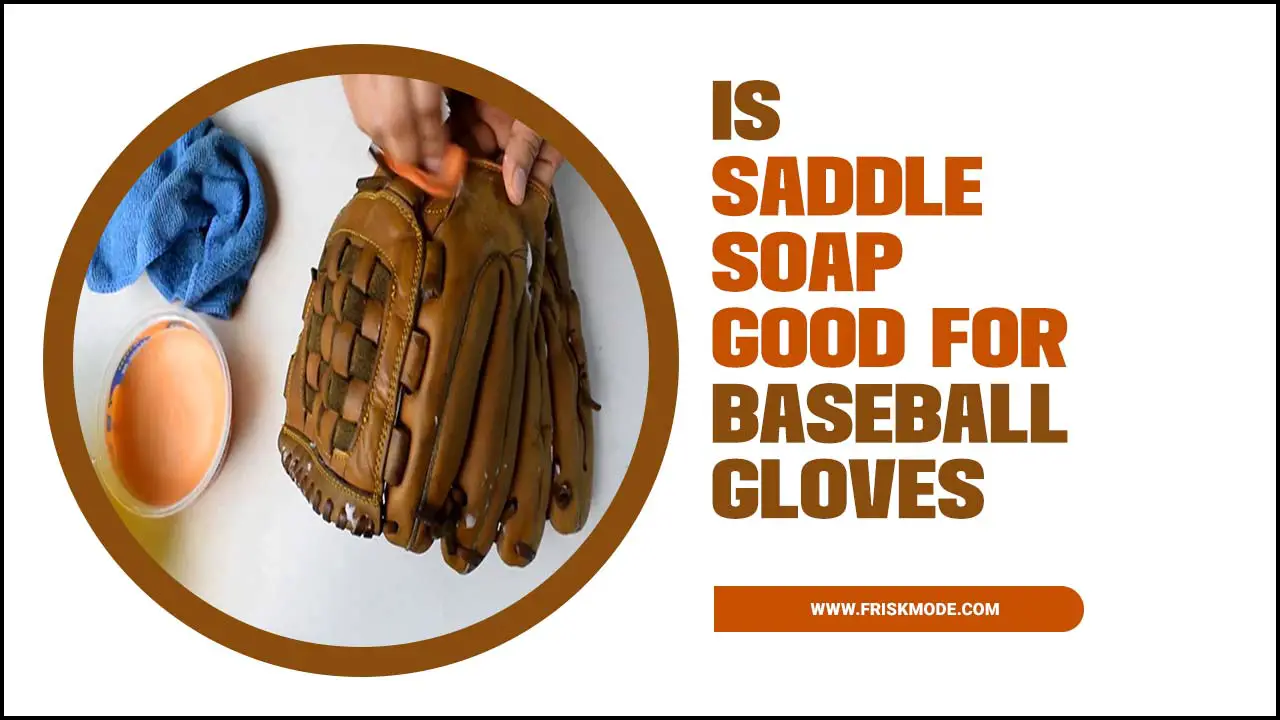Have you ever watched a Little League game and wondered about the field? The field dimensions for Little League baseball play a big role in how the game is played. They are specifically designed for young players to enjoy and learn.
Think about it: when kids step onto the diamond, they want to feel excited. The right field size helps them make great plays and hit home runs. Did you know that a standard Little League field has bases just 60 feet apart? This setup keeps the game fun and fast-paced, perfect for budding athletes.
Understanding these field dimensions can help parents, coaches, and players. It can make a huge difference in how effectively they play. Are you curious about how the rules differ from major league baseball? Join us as we dive into the details of these field dimensions and uncover what makes Little League special!
Field Dimensions For Little League Baseball: A Complete Guide

Field Dimensions for Little League Baseball
Little League baseball fields have specific dimensions you need to know. The pitching distance is usually 46 feet, while the bases are set 60 feet apart. This helps young players to develop their skills. Did you know that these dimensions are designed to make the game safe and fun? Understanding the field layout allows players and coaches to plan effectively. With the right knowledge, every game can be a great experience for everyone involved.Field Dimensions by Division
Breakdown of base paths for each division. Distance from pitcher’s mound to home plate.Little League baseball has specific field sizes, which differ by division. These dimensions keep the game fun and fair for all young players. For example, the base paths for the Minor Division measure 60 feet, while the Majors use base paths of 60 feet too. The distance from the pitcher’s mound to home plate is 46 feet for both divisions. Here’s a quick glance at the main details:
| Division | Base Paths (feet) | Mound to Home (feet) |
|---|---|---|
| Minor | 60 | 46 |
| Major | 60 | 46 |
These sizes help the kids learn and enjoy the game without running marathons! Remember, the focus should be on having fun, not on measuring how far a parent’s arm can throw!
Field Layout and Markings
Description of the layout of the field including infield and outfield. Importance of proper field markings (foul lines, base paths, pitcher’s circle).A baseball field is like a giant pizza, with each slice having its own job. The infield is the area closest to the bases and includes the pitcher’s mound. Meanwhile, the outfield is the grassy expanse where players run after fly balls. Markings are super important! Foul lines tell players where home runs begin, while base paths guide them like a treasure map. The pitcher’s circle? It’s where magic happens! Without clear markings, teams might as well play tag on a playground.
| Field Layout | Importance of Markings |
|---|---|
| Infield: Close to bases | Foul lines: Define fair balls |
| Outfield: Grass for catching | Base paths: Show where to run |
| Pitcher’s mound: Center of action | Pitcher’s circle: Safe throwing spot |
Challenges with Field Dimensions
Discussion on common challenges coaches face regarding field size. Solutions and adaptations for smaller or irregularly sized fields.Coaches often face a tricky puzzle when it comes to field size. Many leagues have specific dimensions, but some fields are like a funhouse mirror—strange shapes and sizes can make things wacky! When a field is too small, players might feel like they’re in a crowded elevator. However, some easy fixes exist. Coaches can use cones or markers to adjust bases, or create fun games that still fit the space. Remember, it’s more about having fun than being perfect!
| Challenge | Solution |
|---|---|
| Irregular field shapes | Use cones to set up bases. |
| Small field size | Focus on skill-building games. |
| Field Maintenance | Involve parents for upkeep! |
Benefits of Standardized Dimensions
Analysis of how standardized field dimensions enhance player development. Importance of consistency for fair competition.Baseball can be as delightful as a pop fly caught in mid-air! Using standardized field dimensions helps all players improve their skills. With the same size field, every kid knows what to expect. Consistency means fair play, too; everyone has a fair shot at the game. Improved focus on player development leads to heroes in cleats, ready to impress parents and snack bar patrons alike!
| Benefit | Description |
|---|---|
| Skill Growth | Standard fields help players develop consistently. |
| Fair Competition | Same rules for everyone mean fair play! |
Local Regulations and Variations
Examination of any local variations in field dimensions. Guidance on how to check and comply with local regulations.Many areas have special rules for baseball fields. It’s essential to know these local rules. For instance, the distance from the pitcher’s mound to home plate can change. Always check with your local league or town parks department for the exact measurements. This helps make sure everyone plays safely and fairly.
- Ask local league officials about rules.
- Visit your town’s sports website for guidelines.
- Check for age group-specific dimensions.
What are the typical field dimensions for Little League baseball?
Field dimensions can vary, but a standard Little League field often includes a 60-foot base path and a 46-foot pitcher’s mound.
Resources for Coaches and Parents
Recommendations for guides and tools to measure field dimensions. Tips on maintaining and improving field quality for Little League play.Coaches and parents, listen up! Want to keep your Little League field in tip-top shape? First, grab some handy guides to measure your field dimensions. Using tools like measuring tapes and chalk lines can make a big difference. A quick tip: keep the grass trimmed to help players see the bases better and reduce trips and falls!
| Tools | Uses |
|---|---|
| Measuring Tape | Measure distances like bases and pitcher’s mound. |
| Chalk or Paint | Mark field lines for clarity and fun! |
| Pruning Shears | Keep bushes and overgrowth in check. |
Lastly, remember to check the field often! A great field means happy players and less time spent on band-aids and ice packs. After all, nobody wants to be the player who trips over a rogue dandelion!
Conclusion
In summary, Little League baseball fields have specific dimensions to keep the game fun and fair. Bases are 60 feet apart, and pitchers throw from 46 feet away. Knowing these measurements helps players and coaches. You can explore these rules more online or visit a local field to see them in action. Let’s play ball!FAQs
What Are The Standard Dimensions For A Little League Baseball Field, Including The Distance From Home Plate To The Outfield Fences?A standard Little League baseball field has a distance of 60 feet from home plate to first base, second base, and third base. The pitcher’s mound is 46 feet from home plate. The outfield fences are usually 200 feet away from home plate. This setup makes it fun for kids to play!
How Does The Field Dimension Change Based On The Age Group Or Division Within Little League?In Little League, the field size changes as kids get older. Younger players, like those in T-ball, play on a smaller field. As you get older and play in Minor or Major League, the field gets bigger. Bigger fields have longer bases and a farther pitcher’s mound. This helps you learn and play better as you grow!
What Are The Recommended Base Path Distances For Different Age Brackets In Little League Baseball?In Little League baseball, different age groups have different base path distances. For tee ball, it’s 60 feet. For Minor League players, it’s also 60 feet. For Major League players, the distance is 70 feet. Older kids in Junior and Senior Leagues use 90 feet. This helps players of all ages play better!
How Do The Pitching Mound Dimensions Differ Between Various Levels Of Little League Play?In Little League, the pitching mound size changes with age. For younger kids in Minor League, the mound is 46 feet from home plate. In Major League, it’s the same distance, but for older teams like Intermediate, it’s 50 feet. Little League levels help make sure everyone can have fun and improve at their own pace!
What Safety Considerations Are Taken Into Account When Determining Field Dimensions For Little League Baseball?When figuring out field sizes for Little League baseball, we think about safety first. The bases need to be a safe distance apart so players don’t bump into each other. We also make sure the pitcher’s mound isn’t too high to prevent injury. Finally, we consider the space for spectators to stay safe and enjoy the game. Keeping everyone safe is our top priority!







